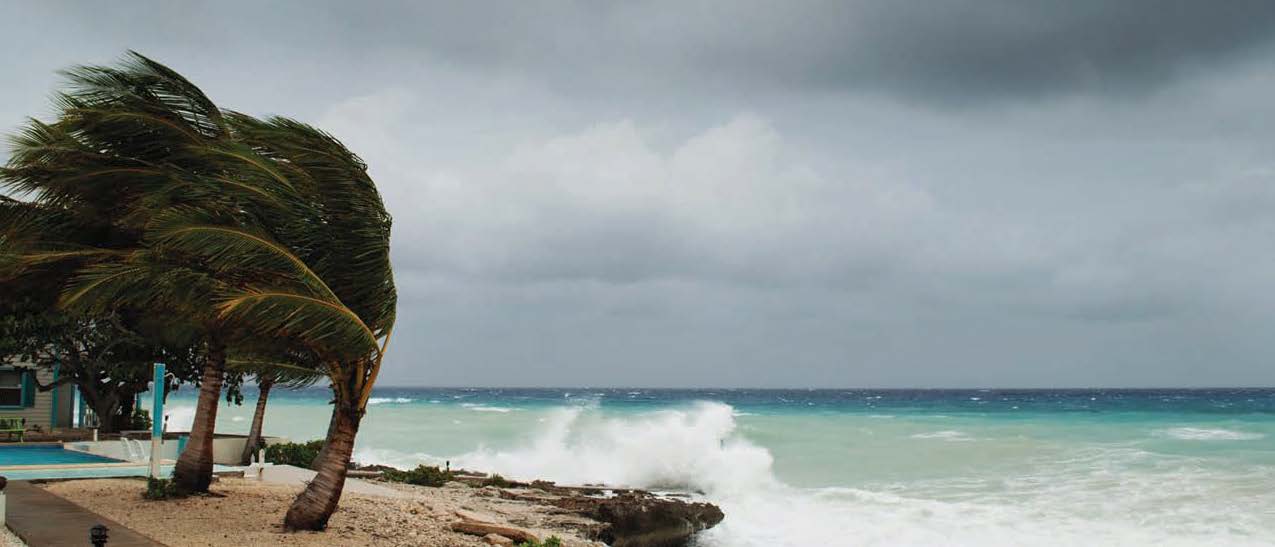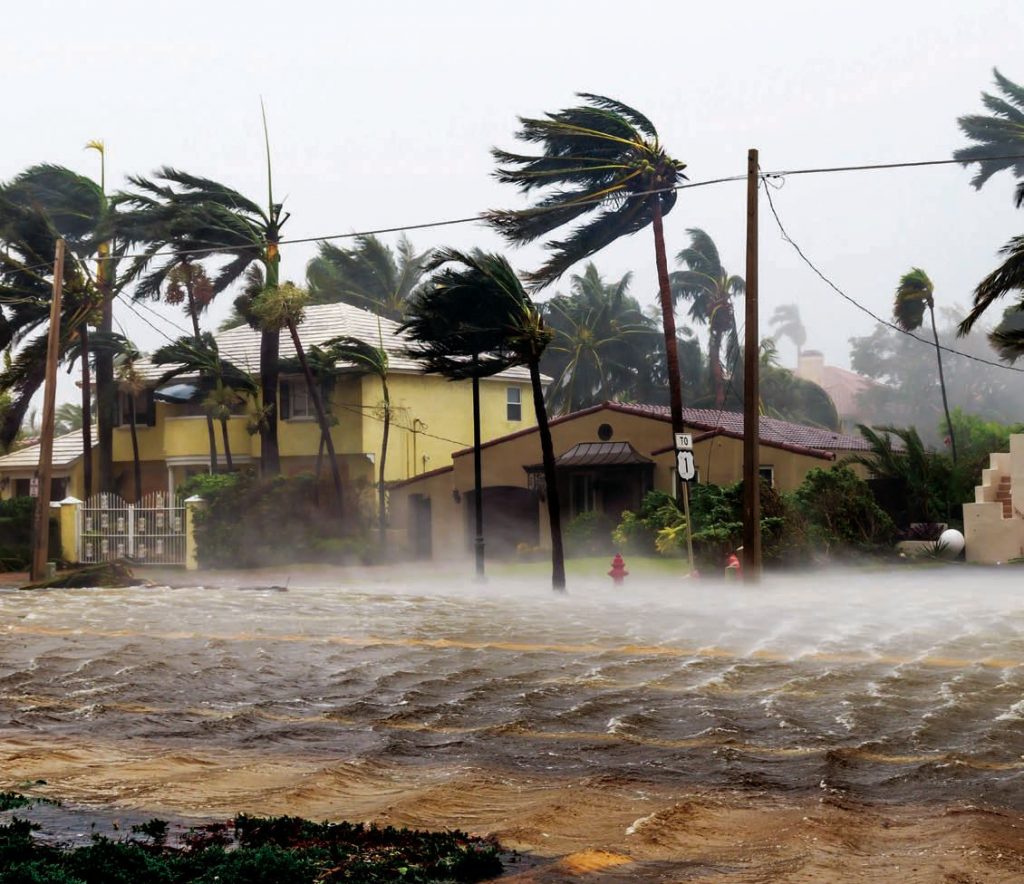Scott Sklar January 14, 2018

With three hurricanes hitting the US this Fall, horrendous western forest fires, an earthquake in Mexico to the south, major flooding throughout the US, some drunken human and errant animals harming electric poles and natural gas pipelines, and even some small terrorist acts—our electric grids have never been more stressed.
It is clear we need to be prepared for a changing world—advances in materials and technologies—changes in climate and weather and politics. Our electric utilities grids are embellishments of what Thomas Alva Edison created from his first electric generation plant on September 4th, 1882 in New York City.
I am sorry, we no longer have telegraph lines or telephone booths, and copper communication wires are shrinking to the past. In the last twenty years we have cellular communications and the internet’s data centers, both with self-healing grids.
The U.S. Energy Information Administration (EIA) just released its mid-year “Electric Power Monthly” report, and for the first half of 2017, renewable energy “utility-scale” generation plus small-scale PV totaled 386,981 megawatt-hours (MWh), so for the first six months of 2017 renewable energy electricity generation accounted for 20.05% of total US electricity production. According to market research firm IHS, the global energy storage market is growing exponentially to an annual installation size of 6 gigawatts (GW) in 2017 and over 40 GW by 2022 — from an initial base of only 0.34 GW installed in 2012 and 2013. The total deployed capacity of these 205 projects is about 400 MW. This figure may be compared with approximately 21,500 MW of the more mature pumped hydro technology.
Individual battery storage projects in the U.S. range in size between 4 kilowatts (kW) and 36 MW. The vast majority of the capacity has been deployed in the past five years. Between 2011 and 2014, the total deployment was approximately 186 MW. In 2015 more than 150 MW were deployed (http://bit.ly/2kbKd12).
In fact, we have more distributed electricity generation from biomass, geothermal, hydropower and marine, large and small wind, photovoltaics and concentrated solar power, and waste heat-to-power than in any time in history. And at the same time while distributed renewable energy generation and energy storage technologies are commercializing to scale, smart controls, advanced sensors, and network controls and diagnostics are also leapfrogging along. Community solar, where community-installed solar generation is shared with ratepayers within their community, has grown from over 200 MW installed in 2016 to likely over 400 MW installed in 2017 (http://bit.ly/2AZ4zoZ).
And in August 2016, GTM now forecasts that U.S. microgrid capacity will reach 4.3 GW by 2020, up from the research firm’s estimate last quarter of 3.71 GW. The U.S. currently has about 160 microgrids with 1,649 MW of capacity (http://bit.ly/2BilkMb).
But most of our power lines are as old as molasses. Much of the U.S. energy system predates the turn of the 21st century. Most electric transmission and distribution lines were constructed in the 1950s and 1960s with a 50-year life expectancy, and the more than 640,000 miles of high-voltage transmission lines in the lower 48 states’ power grids are at full capacity (http://bit.ly/2BY2dnR). And most of our transmission lines connect coal mines and large hydropower generation plants rather than places where the maximum wind, desert solar and geothermal plants are, for instance.
And large electric power transformers are critical infrastructure to the electric grid and are huge, weighing up to 820,000 pounds. According to Energy Skeptic, “If large power transformers are destroyed by cyber-attack, sabotage, severe weather, floods, or simply old age, parts or all of the electric grid could be down in a region for 6 months to 2 years.” This is because the USA imports 85% of utility-size electric transformers, and they are custom-built, with long lead times to design, bid, manufacture, and deliver, and with components that depend on long foreign production and supply chains, in some cases two years long (http://bit.ly/2kcAA2p).
But electric inverters and transformers for distributed energy, while imported, are also made in the USA by significant companies including Schneider Electric, Princeton Power, Easton, Exeltech, and many others.
So the question I am putting forth to Solar Today readers is why modernize the electric grid of the 1800’s or mid-1960’s rather than optimizing electric power generation, distribution and use, similar to the evolution of cellular communications, data centers and the internet?
And by the way, back to the cellular analogy—we haven’t given up wires. We have optical fiber systems such as Fios, which interacts seamlessly with cellular towers and communications satellites. And according to the US Department of Energy (US DOE), we have over 3 million data centers across the United States drawing about 10% of our nation’s electricity. (http://bit.ly/2kEFWHz) These new multi-trillion dollar networks weren’t really-scaled even 30 years ago.

So when Puerto Rico’s grid is blown down, or when southern Florida or Houston’s (TX) grids were seriously harmed, or when the western state forest fires burned down wires (in some cases started by these very same wires and transformers), the question needs to be asked—why?
Marty Cooper, known as the “father of the cell phone,” said, “Cellular phones will absolutely not replace local wire systems. Even if you project it beyond our lifetimes, it won’t be cheap enough.” (http://bit.ly/2A5fkSW) Doubts about the early internet were widely held (it started as ARPA net and building up use in the 1970’s). The original ARPANET grew into the Internet. The Internet was based on the idea that there would be multiple independent networks of rather arbitrary design, beginning with the ARPANET as the pioneering packet switching network, but soon to include packet satellite networks, ground-based packet radio networks and other networks. The Internet as we now know it embodies a key underlying technical idea, namely that of an open architecture networking. In this approach, the choice of any individual network technology was not dictated by a particular network architecture but rather could be selected freely by a provider. (http://bit.ly/2AKqxez)
So I encountered the same skepticism when I told the Department of Homeland Security, Army Corps of Engineers, and Puerto Rican government officials not to rebuild just a slightly improved version of the same electric grid. In fact I had published in October 2017 in “The Hill,” read by members of Congress and their staffs “ (http://bit.ly/2BnF3dw), “But more importantly, it’s less about technologies but about smart integration, seamless interaction, to maximize resiliency and provide lower cost electricity compared to the 24 to 48 cents per kWh Puerto Ricans paid before Hurricane Irma.” Rather than re-establishing the old improved grid version, let’s allow the local governments and the private sector to develop a far more resilient, multi-technology network that mimics our resilient networks–by segmenting the electric grid (which could be an upgrade of existing wires and transformers within the segments), and then divide the segments into their own operational microgrids. When problems occur the regional segments can isolate quickly and passively from each other (via smart sensors and controls), and the same could be true for the microgrids and community grids within each regional segment, meaning not everything needs to go down when the grid is harmed.
The exceedingly fast growth of distributed renewbles, energy storage (batteries, pumped hydropower, flywheels, compressed air and liquids, and even hydrogen), advanced controls and sensors driving the market penetration of community solar and wind, and microgrids are the harbinger of things to come. But just like the early cellular and internet pioneers, scaling it to size beyond the “Dick Tracy wrist phone” took some convincing of consumers, regulators, and financiers. The same is true here, but we have nothing to lose and everything to gain.
About the Author
Scott Sklar runs The Stella Group, Ltd., a strategic technology optimization and policy firm. He is an Adjunct Professor at The George Washington University teaching two unique interdisciplinary sustainable energy courses. He’s also an Affiliated Professor with CATIE, an international graduate University in Costa Rica. He was re-appointed onto the US Department of Commerce Renewable Energy & Energy Efficiency Advisory Committee (RE&EEAC) and serves as Vice Chair through June 2018.




